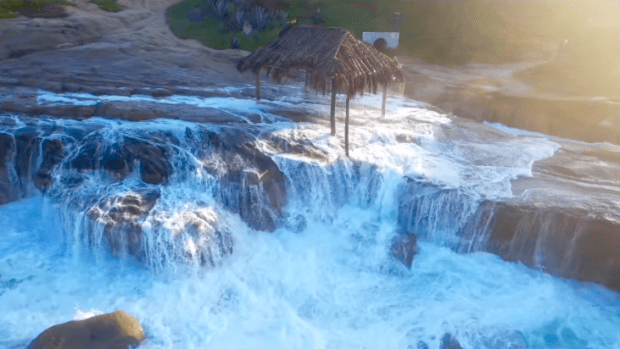Southern California, in recent days, has seen a flurry of waves and weather.
A solid west northwest swell (peaking around 3.5 feet at 12 seconds), coupled with squalls and full-on rainstorms, have made for a wintery, wet fun few days of surf.
But there’s another climatological, oceanic factor contributing to all the excitement: big tide swings, bordering on “king tides.” And that’s making things a bit sketchy along certain shorelines in the region, like La Jolla’s Windansea Beach.
The footage above comes from marine life documenter, Scott Fairchild, and shows waves inundating the iconic palapa at Windansea, crashing into the rocks and beyond.
When one thinks of Windansea, aside from the waves, the palapa (or “the shack”) comes to mind. For more on the history of the hangout, here’s Matt Warshaw from the Encyclopedia of Surfing:
“A palm-frond beach shack was erected on the sandstone cliffs in front of the break for the first time in 1946, and ‘the Shack’ eventually became a surf world icon.”
How ‘bout king tides? What’s the deal with them?
According to UC San Diego’s Scripps Institute:
“The term king tide is generally used to describe the highest tides of the year. Tides are caused by the gravitational forces of the moon and the sun. Even though both the sun and moon influence our tides, the moon’s gravitational pull is about twice as strong than that of the sun.
“Therefore, we experience different tidal forces as a result of how far away the sun, moon, and earth respectively are from each other. When the earth, moon, and sun are near alignment we get a new moon (moon between the sun and earth) and full moon (earth between the moon and sun). This alignment causes an increase in the gravitational pull roughly twice a month called ‘spring tides’. The moon’s closest position to the earth is called a ‘perigee.’
“When a full or new moon coincides with perigee we get perigean spring tides. These are slightly larger tidal events that happen about three or four times a year.”
More king tides are expected in San Diego on January 11th and 12th of 2024, when the highs and lows will peak at 7.2 and -1.7 feet.
***
Don’t miss another headline from SURFER! Subscribe to our newsletter, follow us on Instagram, and stay connected with the latest happenings in the world of surfing. We’re always on the lookout for amusing, interesting and engaging surf-related videos to feature on our channels.
Whether you’re a professional surfer or just an amateur, we want to see your best footage and help you share it with the world. Submit your video for a chance to be featured on SURFER and our social channels. Be sure to subscribe to our YouTube channel to watch high-quality surf videos.
Original Post from this site
